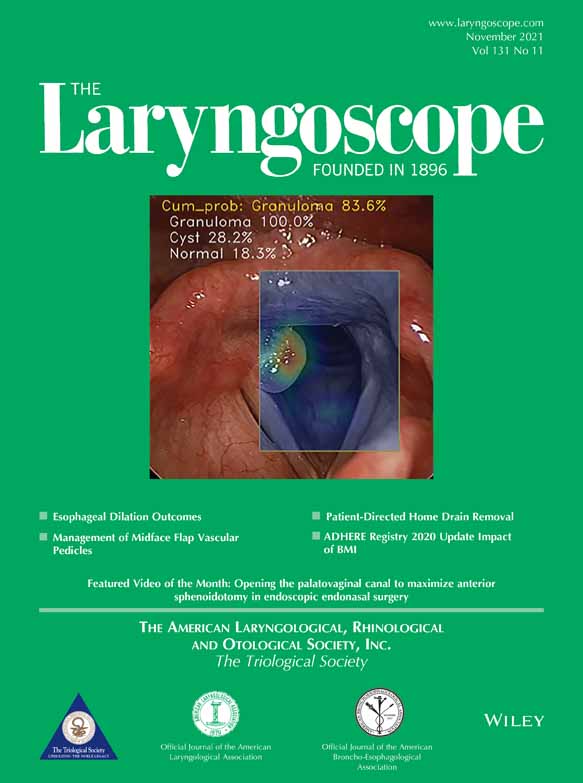Optimal Arytenoid Position in Laryngeal Framework Surgery: An Anatomic Human Larynx Study
Editor's Note: This Manuscript was accepted for publication on April 12, 2021.
This work was presented at the 101st Annual Meeting of the American Broncho-Esophagological Association, occurring virtually with the Combined Otolaryngology Spring Meetings (COSM) April 7, 2021.
The authors have no funding, financial relationships, or conflicts of interest to disclose.
Abstract
Objectives
The purpose of this study was to better understand the effects of stitch placement on arytenoid medialization by measuring normative cricoarytenoid joint anatomy and changes in arytenoid position when varying arytenopexy stitch configuration.
Methods
This adult human larynx study was done in two parts. First, measurements of the cricoid and arytenoid cartilage anatomy relevant to cricoarytenoid joint function were made in 45 preserved larynges (26 male (M), 19 female (F)) using digital calipers. Second, the arytenoids of six fresh larynges ( three M, three F) were sutured to the cricoid using various arytenopexy-stitch placements ranging from inferior-lateral to superior-medial, and the resulting arytenoid positions were compared by measuring medial displacement of the arytenoid body and change in glottal configuration from macro still images using Image J. Paired t-tests were used to compare the results.
Results
Cartilage and joint facet dimensions showed differences between males (M) and females (F). Cricoid facet lengths averaged 9.3 mm (M) and 7.1 mm (F), and widths averaged 4.9 mm (M) and 4.0 mm (F). The arytenoid facet widths averaged 10.5 mm (M) and 9.7 mm (F). Average distances between cricoid facets were 11.8 mm for both males and females. Securing the arytenoid superior-medially on the cricoid facet produced more medialization (2.2 mm vs 1.0 mm, P < .001) and better glottic aperture configuration (9.5° vs 2.7°, P < .001) than securing the arytenoid inferior-laterally on the facet.
Conclusions
Anatomic consistency in cricoarytenoid anatomy provides reliable surgical landmarks for ideal placement of an arytenopexy suture to optimally reposition the arytenoid cartilage. Optimal arytenoid medialization can be accurately reproduced with an arytenopexy-suture that is placed superior-medially on the cricoid facet.
Level of Evidence
NA Laryngoscope, 131:2540–2544, 2021




